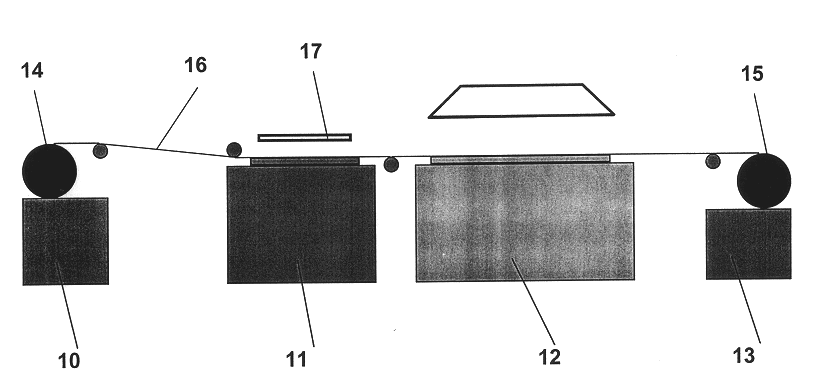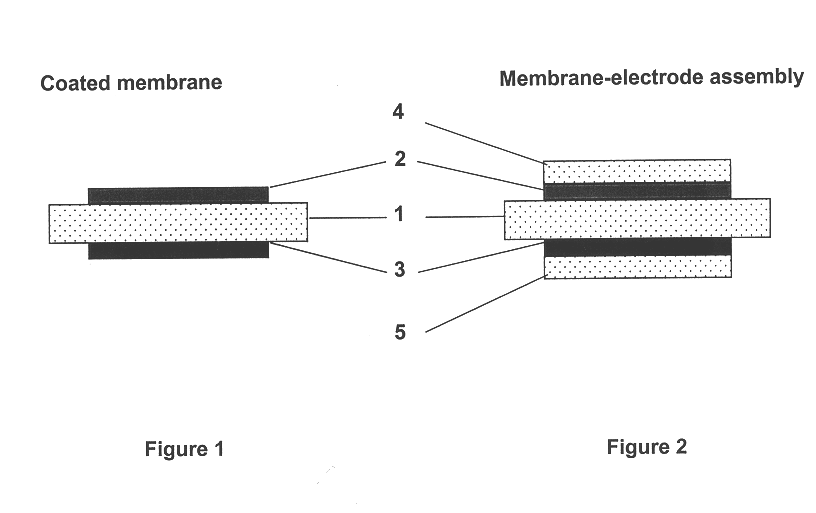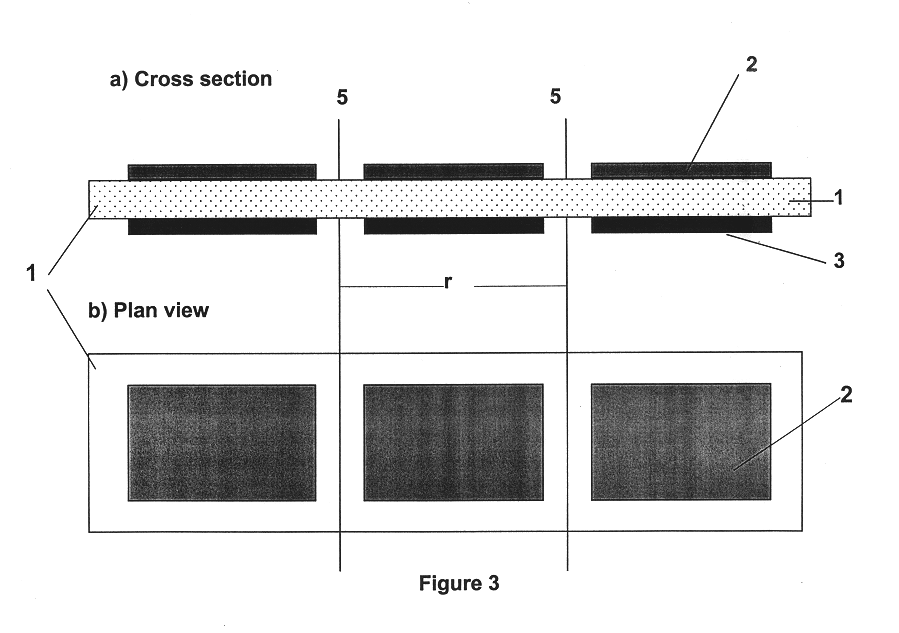Process for applying electrode layers to a polymer electrolyte membrane strip for fuel cells
- Summary
- Abstract
- Description
- Claims
- Application Information
AI Technical Summary
Benefits of technology
Problems solved by technology
Method used
Image
Examples
example 1
A 10 meter long and 0.3 meter wide piece of polymer electrolyte film of the NAFION.RTM. NE 1035 type was provided in the form of a roll. The water content of the membrane was 2 wt. %. The membrane was in the Na.sup.+ form. The membrane was printed with the electrode layers on a strip coating line as shown in FIG. 4. The polymer electrolyte film was fed to the screen printing station by means of the unwinding and transport device. In the screen printing station the film was printed with consecutive electrode layers measuring 14.9 cm.times.24.7 cm using the ink specified above.
The average speed of the membrane through the coating line was 300 m / h. The individual electrode segments were printed on the membrane at a distance of 6 cm from one another.
To dry the freshly printed electrode layers, after leaving the screen printing station, the membrane was passed continuously through a circulating air drier where the solvent components of the printing ink were removed at 90.degree. C. and t...
example 2
Using a membrane of the same type as in Example 1, another coating test was carried out. In contrast to Example 1, the water content of the membrane was adjusted to 20 wt.% prior to each coating. For this purpose, a soaking bath was inserted in the coating line of FIG. 4 upstream of the screen printing station (see FIG. 5). The temperature of the soaking bath was 60.degree. C.
Apart from this difference, the coating was carried out exactly as in Example 1.
example 3
This example was carried out exactly as in Example 2. In contrast to Example 2 a polymer membrane of the NAFION.RTM. NE 112 type was used. This is a polymer membrane in the acid H.sup.+ form. To coat this membrane an ink was prepared having the composition described above, but omitting the tetrabutylammonium hydroxide. The electrode layers were dried at 70.degree. C.
Testing of the Membrane-electrode Assemblies
One segment was cut out of each of the three coated membranes and reprotonated by treating for one hour in 0.5 M sulfuric acid. A piece of the coated area measuring 9 cm.times.9 cm was then cut out of each, combined with gas diffusion structures and installed in a polymer electrolyte membrane test cell with an active area of 50 cm.sup.2. The cell was tested in hydrogen / air operation under a gas pressure of 3 bar. The cell temperature was 75.degree. C. The gas streams were humidified at 85.degree. C. (anode) and 60.degree. C. (cathode). The gas stoichiometry was 1.5 for hydrogen...
PUM
| Property | Measurement | Unit |
|---|---|---|
| Angle | aaaaa | aaaaa |
| Fraction | aaaaa | aaaaa |
| Electric potential / voltage | aaaaa | aaaaa |
Abstract
Description
Claims
Application Information
 Login to View More
Login to View More - R&D
- Intellectual Property
- Life Sciences
- Materials
- Tech Scout
- Unparalleled Data Quality
- Higher Quality Content
- 60% Fewer Hallucinations
Browse by: Latest US Patents, China's latest patents, Technical Efficacy Thesaurus, Application Domain, Technology Topic, Popular Technical Reports.
© 2025 PatSnap. All rights reserved.Legal|Privacy policy|Modern Slavery Act Transparency Statement|Sitemap|About US| Contact US: help@patsnap.com



